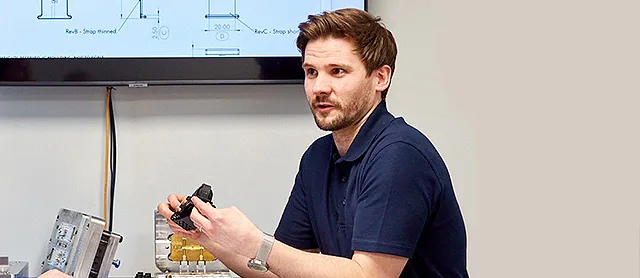By Andy Green – 20Twenty Leadership Programme Tutor.
Are you frustrated that the innovative breakthrough idea seems far away or elusive? Yet are you missing, the opportunities, quite literally, that are under your nose?
If you were asked to name parts of your face you would easy identify your ears, eyes, nose, cheeks and chin(s).
Yet, few accurately label the bit of your face beneath the nose, that ridge between your mouth and nose.
It’s called the ‘Philtrum’. And it is, under your nose.
Philtrum Thinking
The experience led me to coin the term ‘Philtrum Thinking’ – about harnessing and harvesting opportunities very close to you, often literally under your nose. The opportunity could be an insight or idea from:
- Someone you know.
- Someone who someone you know, knows.
- Some network you belong to.
- Some ‘savviness’ you have, a particular expertise or experience.
- Something you’ve done before or been involved with.
- Some part of something you’ve done before.
- Something that’s just happened to you.
- Something you’ve just seen in the media.
- Something your creative role model has done.
- Something within 12 feet of you.
These immediate resources could be more likely to yield dividends and work because they are more easily realisable. They can offer less risk, offering what are called ‘Baby Steps’ for implementation – the short mini-steps within any action required. By engaging with someone you already know it makes it easier for them to join your quest to create.
You are never more than 12 feet from an opportunity
One of my talks is called ‘You are never more than 12 feet away from an opportunity’ on how anything within 12 feet of you is an opportunity: it might be somebody, something, or someplace.
The notion of 12 feet as in one week arose from coming across two different statistics: in a building you are, apparently, never more than 12 foot from an electric motor – or a rat! (I also discovered that at any public event- remember those – you are never more than 12 feet away from a Manchester United supporter!). Any time you have a problem, usually within 12 feet. there are potential solutions.
I remember an episode from when running a training session at a university in Perth, Australia. While at the flipchart asking the delegates what they wanted to get out of the day’s session, a sceptical Australian woman said: “I want to learn to play the guitar!”. An apprehensive feeling of inadequacy momentarily crossed my mind but I was luckily rescued when another delegate said: “I’ll teach you.”.
Perfect proof of the ‘You are never more than 12 feet away from an opportunity’ theory in action.
Overlooking Opportunities
So, why do we overlook the opportunities that are under your nose?
At their heart these seeds of opportunities are paradoxical. Even though they are close, extra-ordinarily close, you cannot directly see them, except in a mirror which offers a detached, distorted view.
You need to learn to be comfortable about being uncomfortable and uncertainty, dealing with things that you don’t have a 100% handle on. You need to be comfortable about uncertainty, not waiting for every duck you think that you think needs to be in the row, to join the roll call.Half-baked can often be better than no baked.
We tend to look for the complete rather than the seed, the germ of an idea, (or what I call ‘IdeaPoo’, the really seemingly rubbish ideas that get rejected in an instant.)
These tendencies, coupled with the ‘grass is always greener’ elsewhere syndrome, where we may lack self belief, have poor self esteem about our own reality, means we overlook the potentially richest, most fruitful opportunities that are under your nose.
Boosting your sagacity – your opportunity spotting radar
Embracing these ideas enhances your ‘sagacity’ – the opportunity-spotting radar within all of us.
Here’s a useful checklist of great prompt questions to boost your sagacity to help you harness ‘Philtrum Thinking’:
- How can you harness the knowledge, skills, or inspirations of someone you know?
- Who do your contacts know that can help you?
- How can you make use of the network you belong to?
- What ‘savvyness’ do you have, a particular expertise or experience, that you can make use of?
- What have you done that you’ve done before?
- What have you done recently?
- Is there some part of something you’ve done before which you can use?
- Is there something that’s just happened to you that you can use?
- Is there something you’ve just seen in the media.
- Think of your creative hero. Is there something they have done recently?
- What are you wearing or holding? Can you create links or inspiration from their qualities to address what you need to do?
- Look around you. Is there something within 12 feet of you that you can use?
One day hopefully, the dictionary will contain the term ‘Philtrum Thinking’, meaning ‘to spot the opportunities under your nose’. By knowing and adopting the term you can avoid missing out on valuable close-at-hand opportunities.
Now, what’s under your nose?
The 20Twenty Programme looks in depth at different processes and tool for being more innovative and using Lean principles to improve your leadership skills.
Further Reading
Creativity: Flow and the Psychology of Discovery – Csikszenmihalyi, M (1996)
The Progress Principle – Amabile, T. and Kramer, S. (2011)
20Twenty Business Growth Programme will be offering its flagship level 7 and level 4 courses on a fully-funded basis for a limited period only.
Please apply below, limited places are available.
APPLY NOW MORE ABOUT THE COURSES





